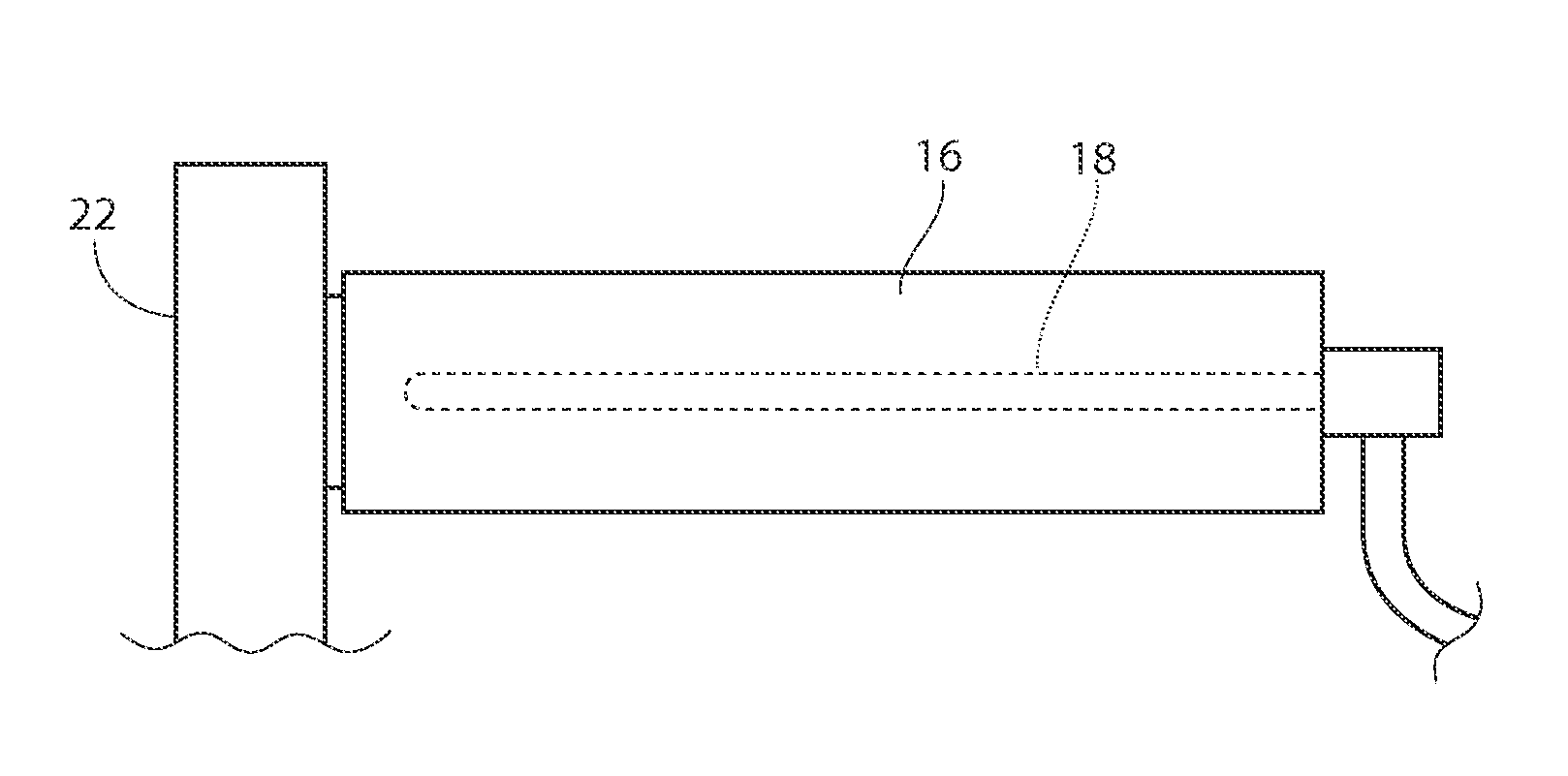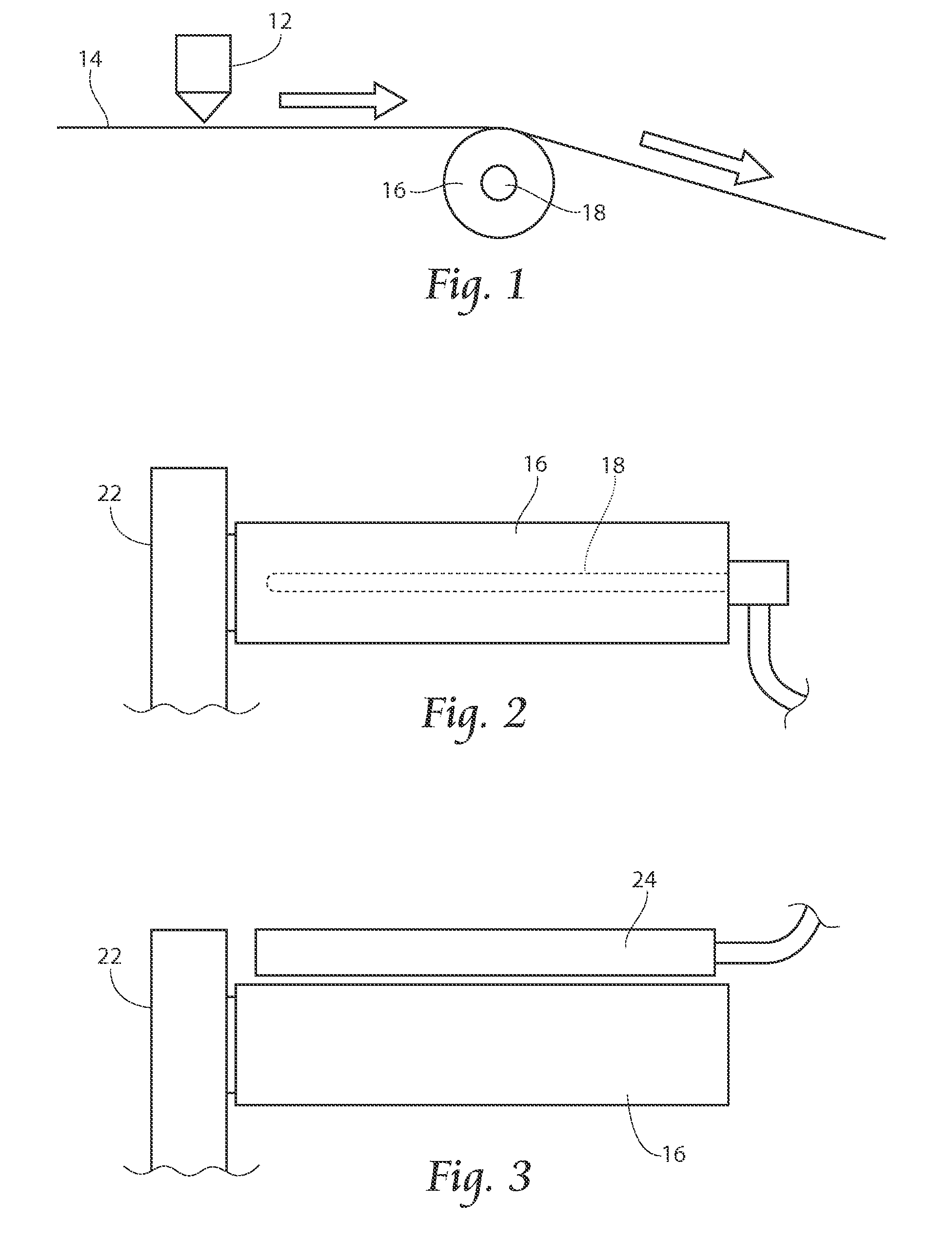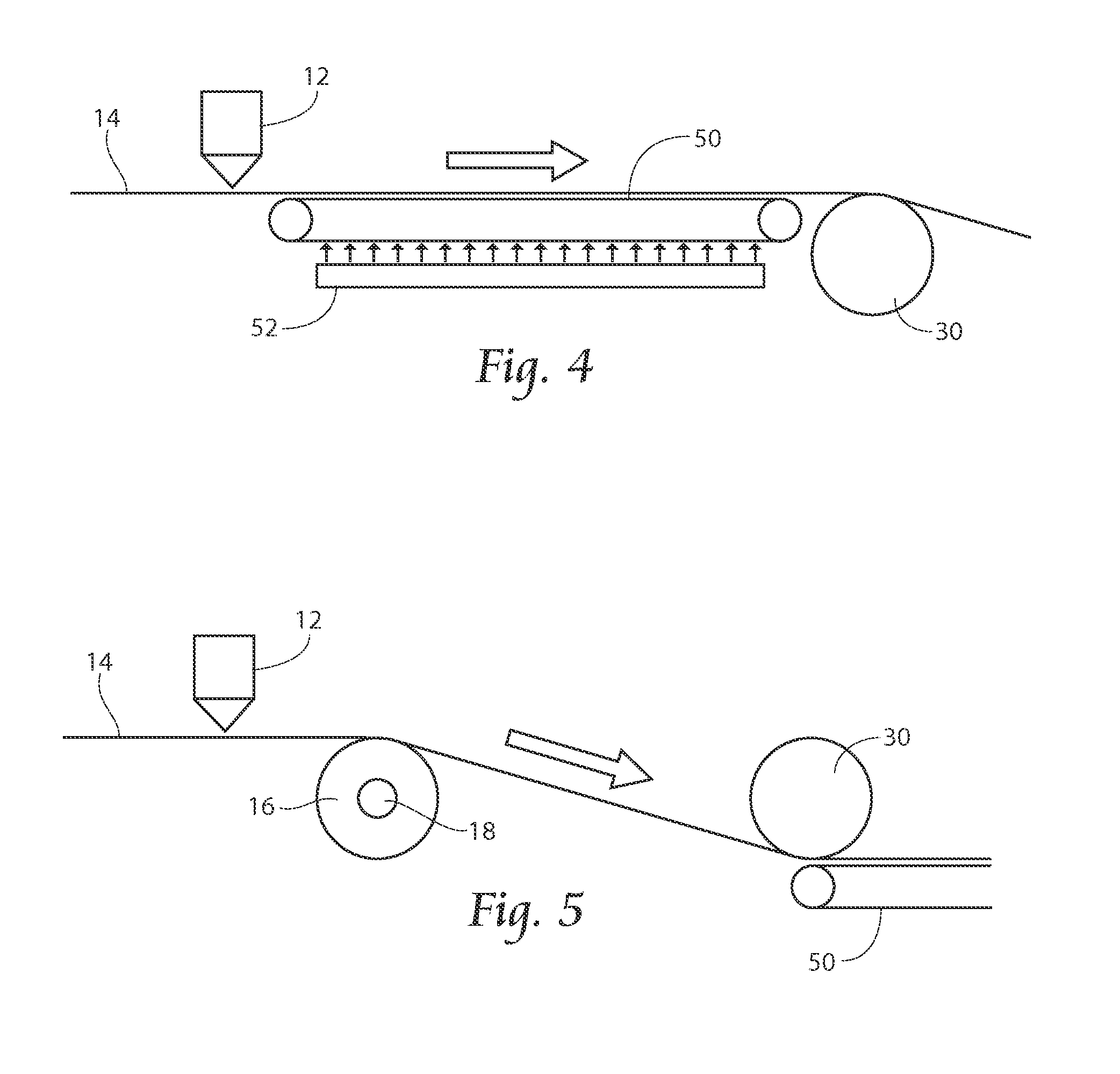Adhesive contamination resistant web processing unit
a technology of contamination resistance and processing unit, applied in the field of processing webs, can solve the problems of high level of super absorbent material, difficult control and maintenance, and inability to remove complex and expensive equipment, so as to reduce the areas experiencing adhesive contamination, reduce the amount of adhesive contamination, and eliminate the effect of complex and expensive equipmen
- Summary
- Abstract
- Description
- Claims
- Application Information
AI Technical Summary
Benefits of technology
Problems solved by technology
Method used
Image
Examples
Embodiment Construction
[0036]Although the disclosure hereof is detailed and exact to enable those skilled in the art to practice the invention, the physical embodiments herein disclosed merely exemplify the invention which may be embodied in other specific structures. While the preferred embodiment has been described, the details may be changed without departing from the invention.
[0037]Referring now to FIG. 1, a heated, roller 16 carrying a nonwoven web 14 applied with adhesive by adhesive applicator 12 is shown.
[0038]Referring now to FIG. 2, a heater cartridge 18
[0039]powered by electrical leads is shown embedded in rotating cylinder or roller 16, which is carried by a mount 22. As shown in FIG. 3, instead of a heater cartridge 18, an induction unit 24 can be positioned proximally to the roller 16.
[0040]FIG. 3 is a side view of an alternative embodiment of a heated structure.
Experiments
[0041]A cartridge heater was used to heat an approximately 1″ diameter roller in three conditions: 1) plasma coated; 2)...
PUM
| Property | Measurement | Unit |
|---|---|---|
| adhesive accumulation resistant temperature | aaaaa | aaaaa |
| adhesive accumulation resistant temperature | aaaaa | aaaaa |
| temperature | aaaaa | aaaaa |
Abstract
Description
Claims
Application Information
 Login to View More
Login to View More - R&D
- Intellectual Property
- Life Sciences
- Materials
- Tech Scout
- Unparalleled Data Quality
- Higher Quality Content
- 60% Fewer Hallucinations
Browse by: Latest US Patents, China's latest patents, Technical Efficacy Thesaurus, Application Domain, Technology Topic, Popular Technical Reports.
© 2025 PatSnap. All rights reserved.Legal|Privacy policy|Modern Slavery Act Transparency Statement|Sitemap|About US| Contact US: help@patsnap.com



